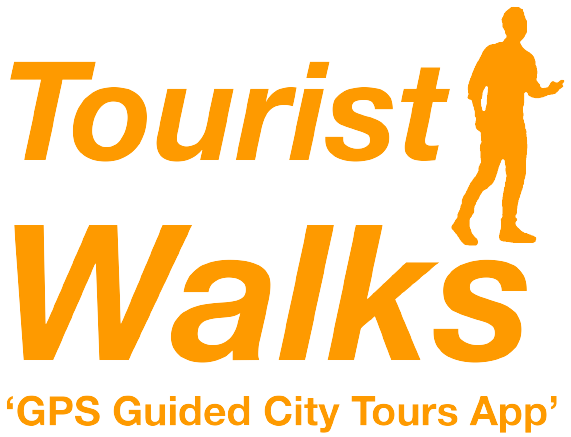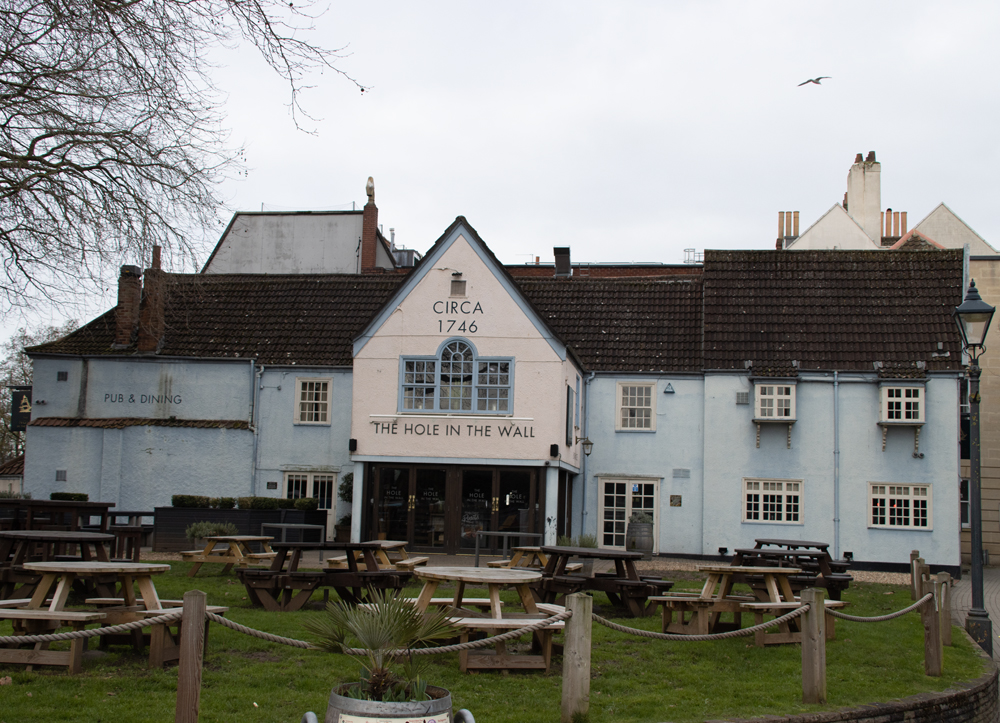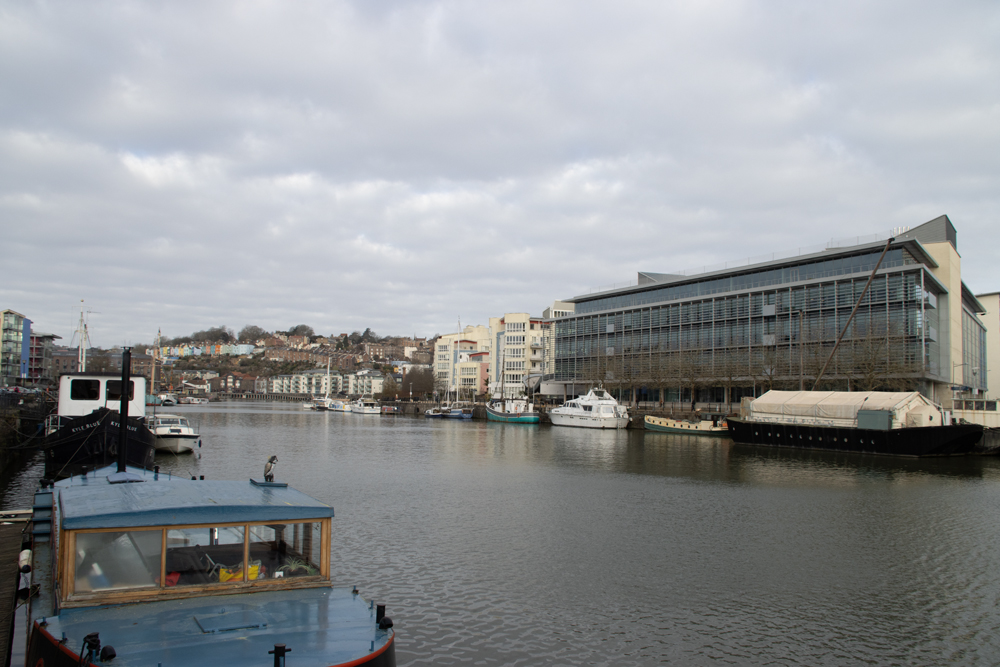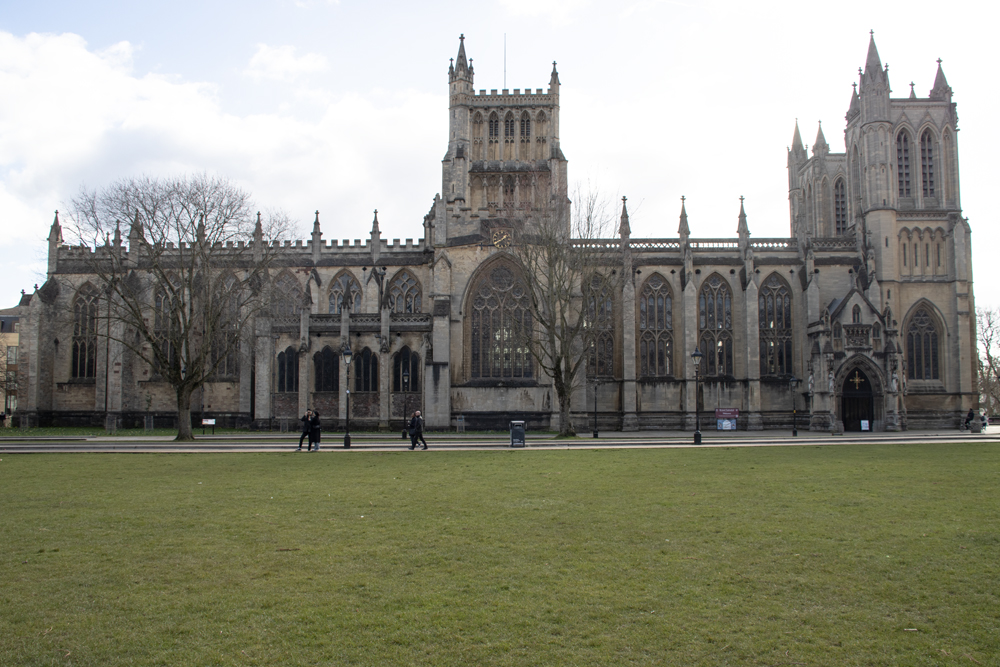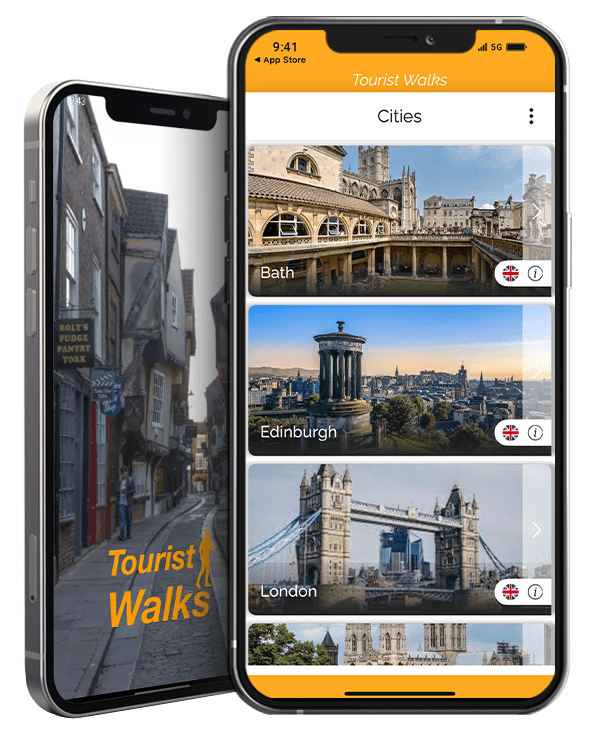
Bristol Tourist Essentials Part 2 Walking Tour
Bristol or “Brcygstowe”, as it was called in anglo-saxon, owed both its existence, and its name to a crossing place over the River Avon. Its earliest streets were around the , now ruined churches, of St Peter and St Mary le Port. It would grow though manufacturing, and world trade, including the slave trade, to become the second most important port, and one of the wealthiest cities in Britain. It was once thought to produce everything you could need for daily life, with a hunger for profit all around. It received a Royal Charter in 1155 and became a County in its own right in 1373. These days it lacks a symbolic centre, as the city was heavily bombed in the second world war but there is still plenty to see and experience in this city, both historical and modern. Our walks make sure you see the best, and they tell the stories that will ensure you appreciate and enjoy your time here. Happy sightseeing.
Locations
Miles Covered
Users
Benefits
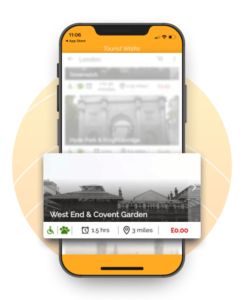
FREE App with A FREE WALK in Every City
Each walk delivers a unique and fascinating user experience. Through Tourist Walks’ self guided tour application you can explore the hidden gems created by local experts. For people wanting to explore the neighbourhood and experience the local culture, we provide a unique experience of exploring the city using GPS guided audio tours. We provide a free walk to our new users.
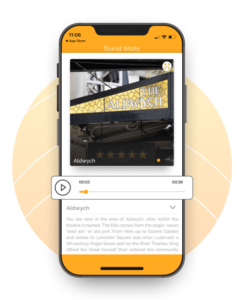
Full Audio Visual Commentary
Tourist Walks is an application that can give you the freedom to explore the famous walks at your own discretion. We have created a full audio-visual self-guided experience that gives you the confidence to explore and discover the stories of various cities on your own.
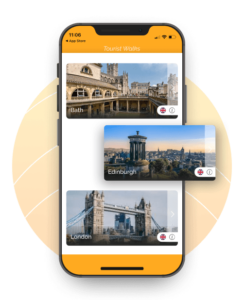
Visit the Best Tourist Sites & Explore Them
Get a list of all the tourist sites you can visit. The Tourist Walks application will guide you to your next destination because every journey starts with a single step.

GPS and Multilingual Audio and Text Guidance
Even if you don’t understand the local language of the city you are visiting, Don’t worry. Audio guided walks have multilingual text assistance that will guide you in your native language.
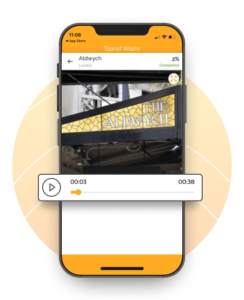
Start/Stop/Rewind
/Restart Go at Your Own Pace
Tourist Walks’ audios are narrated by professionals who will keep you entertained while you are walking your way to the next destination. We help you discover the city around you in a more impressive way.
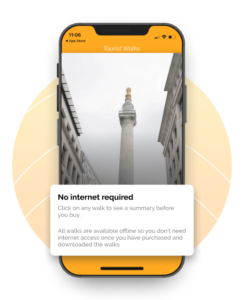
Download the Walk App & Use Offline. No Mobile Data Required.
It is always frustrating when you wish to travel somewhere but your mobile phone service is out-of-order. Don’t worry! Tourist Walks comes with an offline version of built-in maps you might need, even without internet access.
- Free walk
- Full Audio Visual
- Tourist Sightseeing
- Multilingual Texts
- Easy Audio Access
- Offline App
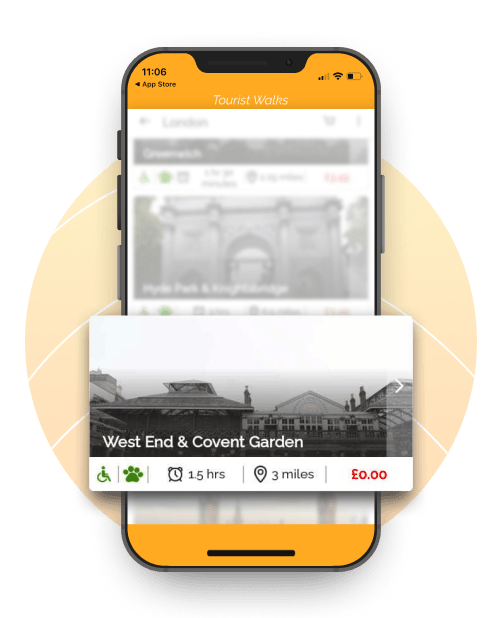
FREE App & Walk Summaries
Each walk delivers a unique and fascinating user experience. Through Tourist Walks’ self guided tour application you can explore the hidden gems created by local experts. For people wanting to explore the neighbourhood and experience the local culture, we provide a unique experience of exploring the city using GPS guided audio tours. The App is FREE, and all the walk summaries are FREE, each walk is individually priced and you can buy all the walks for a city at a discounted price.
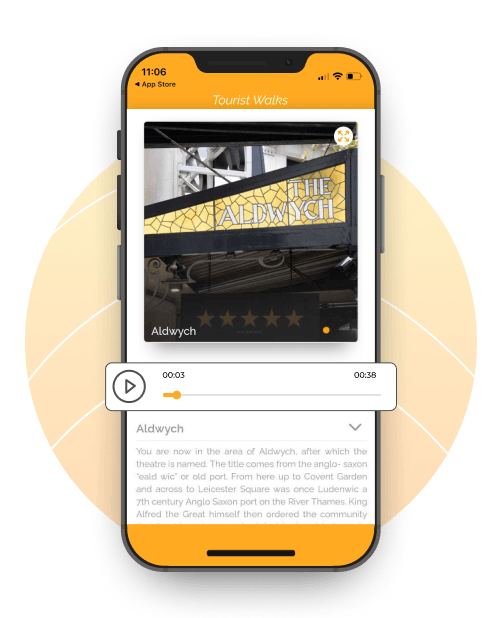
Full Audio Visual Commentary
Tourist Walks is an application that can give you the freedom to explore the famous walks at your own discretion. We have created a full audio-visual self-guided experience that gives you the confidence to explore and discover the stories of various cities on your own.
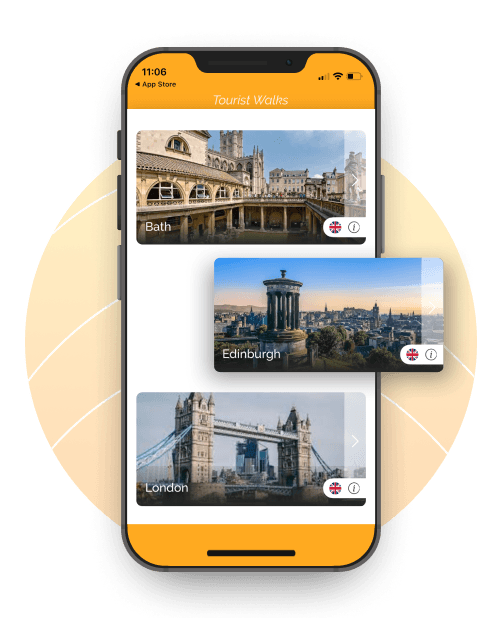
Visit the Best Tourist Sites & Explore Them
Get a list of all the tourist sites you can visit. The Tourist Walks application will guide you to your next destination because every journey starts with a single step.

GPS and Multilingual Audio and Text Guidance
Even if you don’t understand the local language of the city you are visiting, Don’t worry. Audio guided walks have multilingual text assistance that will guide you in your native language.
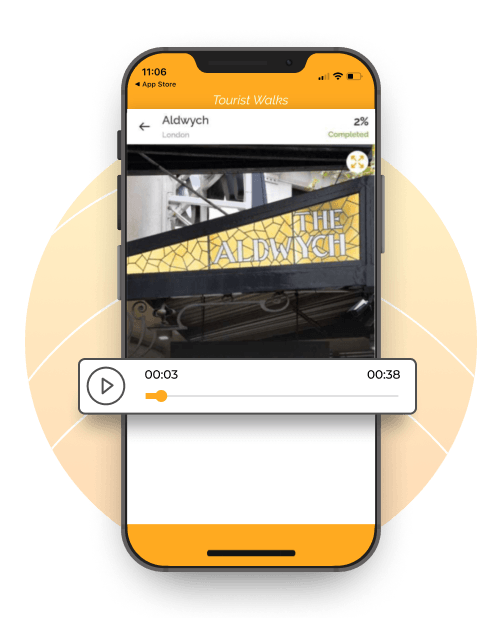
Start/Stop/Rewind
/Restart Go at Your Own Pace
Tourist Walks’ audios are narrated by professionals who will keep you entertained while you are walking your way to the next destination. We help you discover the city around you in a more impressive way.
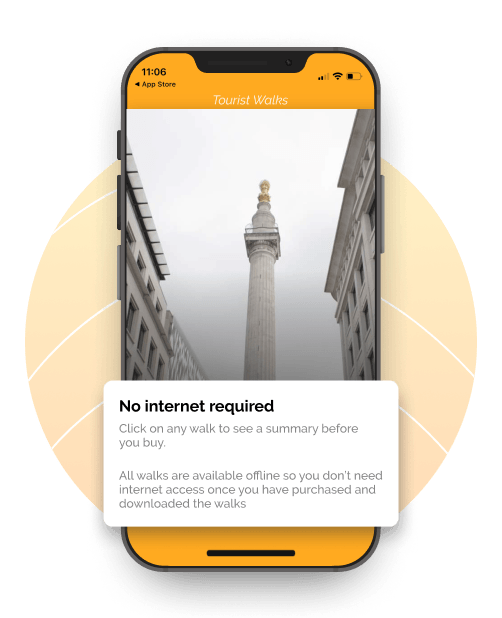
Download the Walk App & Use Offline. No Mobile Data Required.
It is always frustrating when you wish to travel somewhere but your mobile phone service is out-of-order. Don’t worry! Tourist Walks comes with an offline version of built-in maps you might need, even without internet access.
Bristol Tourist Essentials Part 2 Walking Tour
- Tour Name - Tourist Essentials Part 2
- Tour Location - Bristol
- No. of Attractions - #14
- Tour Starting Point - Bristol Cathedral
- Tour Ending Point - The Lord Mayors Chapel
- Attraction Points -
- Bristol Cathedral
- Bristol Central Library
- Paul Dirac Memorial
- We the Curious
- Millenium Square
- Bristol Aquarium
- Lloyds Amphitheatre
- Bristol Floating Harbour
- The SS Great Britain
- The Cabot Tower
- Georgian House Museum
- The Ken Stradling Collection
- City Hall Unicorn
- The Lord Mayors Chapel
Find our Bristol Tourist Essentials Part 2 Walking Tour highlights below
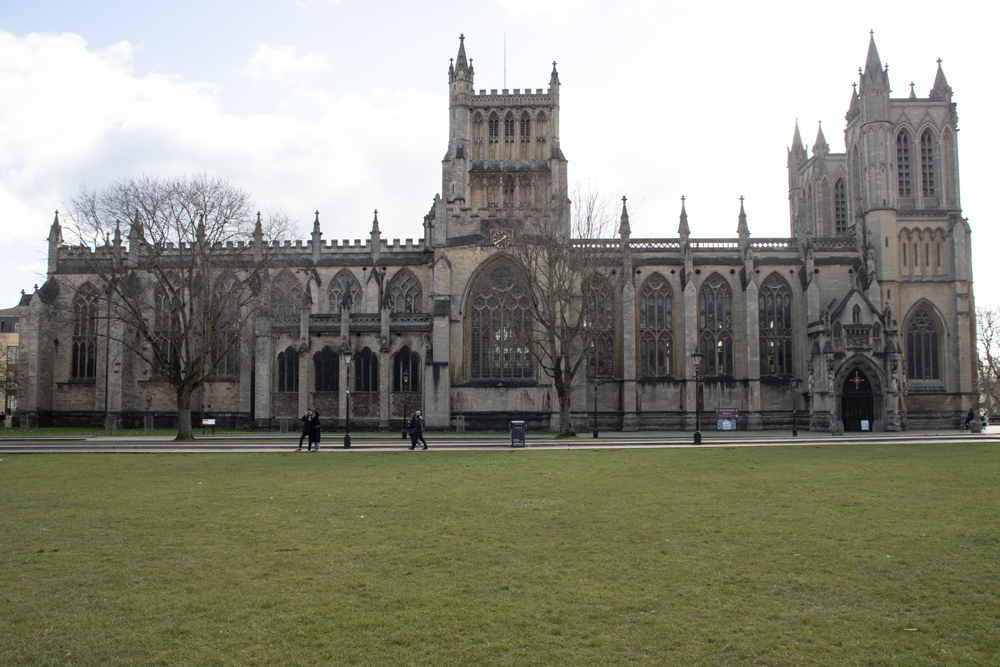
Bristol Cathedral
Bristol Cathedral was once part of an Augustinian Abbey that was founded in 1140, and it became the Cathedral of the city in 1549. One of two cathedrals in the city, it is a mixture of many different architectural styles, as it was built over 600 years from the 13th to the 19th Centuries. So, you will find Norman, Gothic and Gothic Revival architectural styles here. The stained-glass windows are worth seeing, and there are other features dating as far back as the 14th Century. The organ here is 17th Century. It is usually open from noon to 1 PM Tuesday through Saturday, and during daily prayer, Eucharist and evensong. You can also walk through the cloister to the Cathedral Garden, which is a very peaceful place to visit. It includes a herb garden as well as graves dating back hundreds of years. Find out more on our tour.
Bristol Central Library
The original public library, on King Street, was the earliest in England, opening in 1613. If you walk up the stairs closest to College Green, you will enter a marble-clad vestibule, with domes that are tiled in turquoise mosaics. There is also a café on this floor, if you would like a drink. The books on the upper floors are accessed by spiral staircases. The Bristol room contains the oldest books in the library.
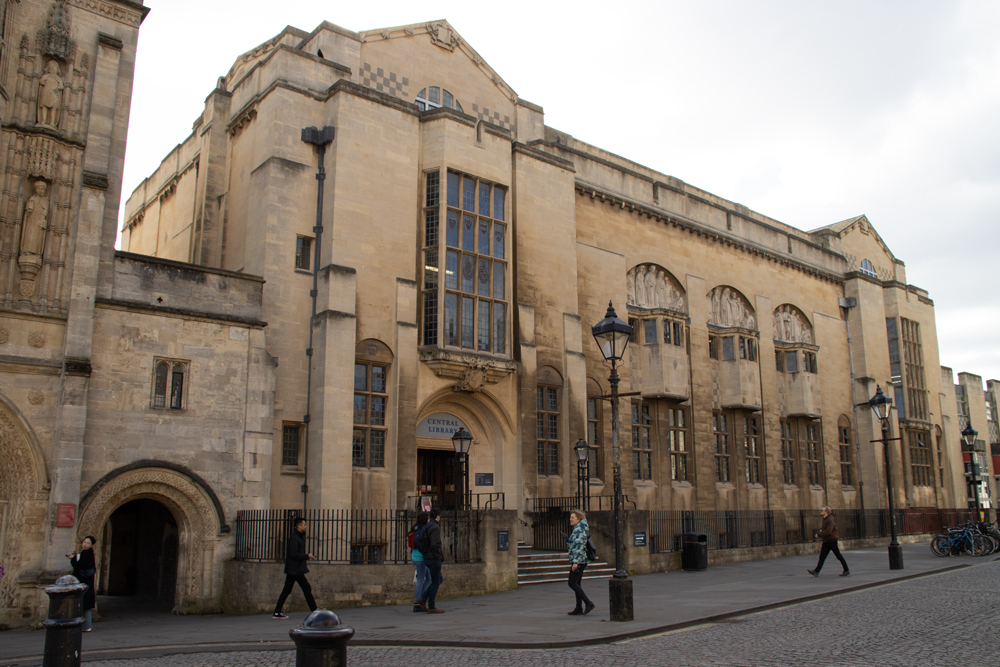
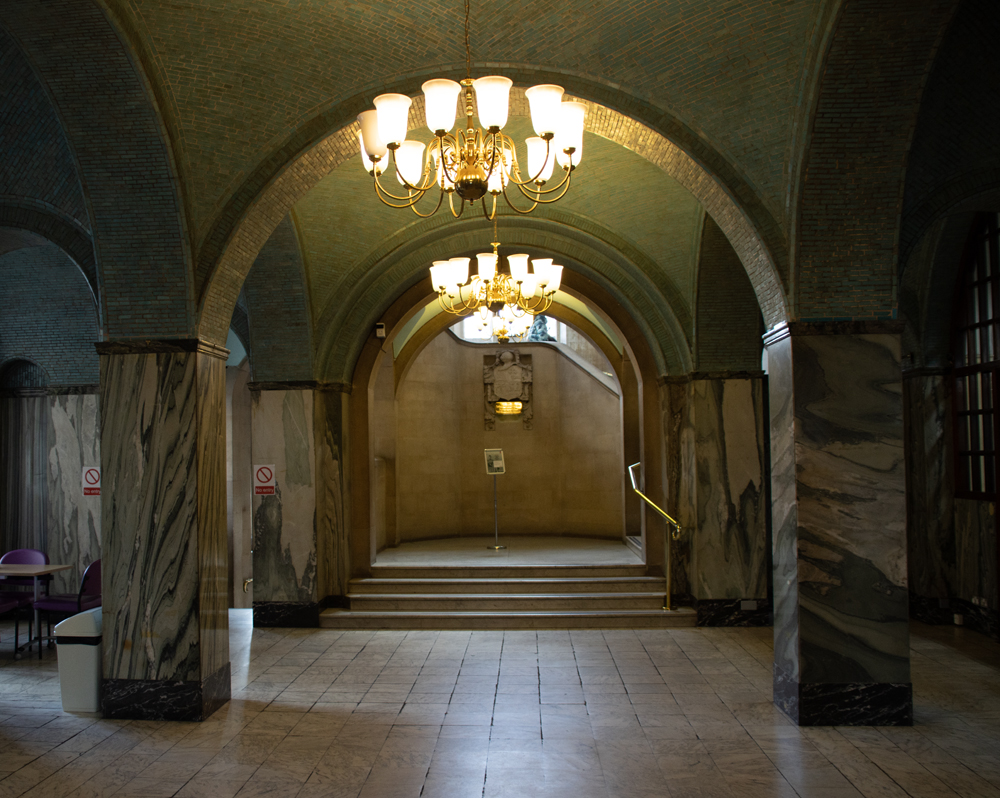
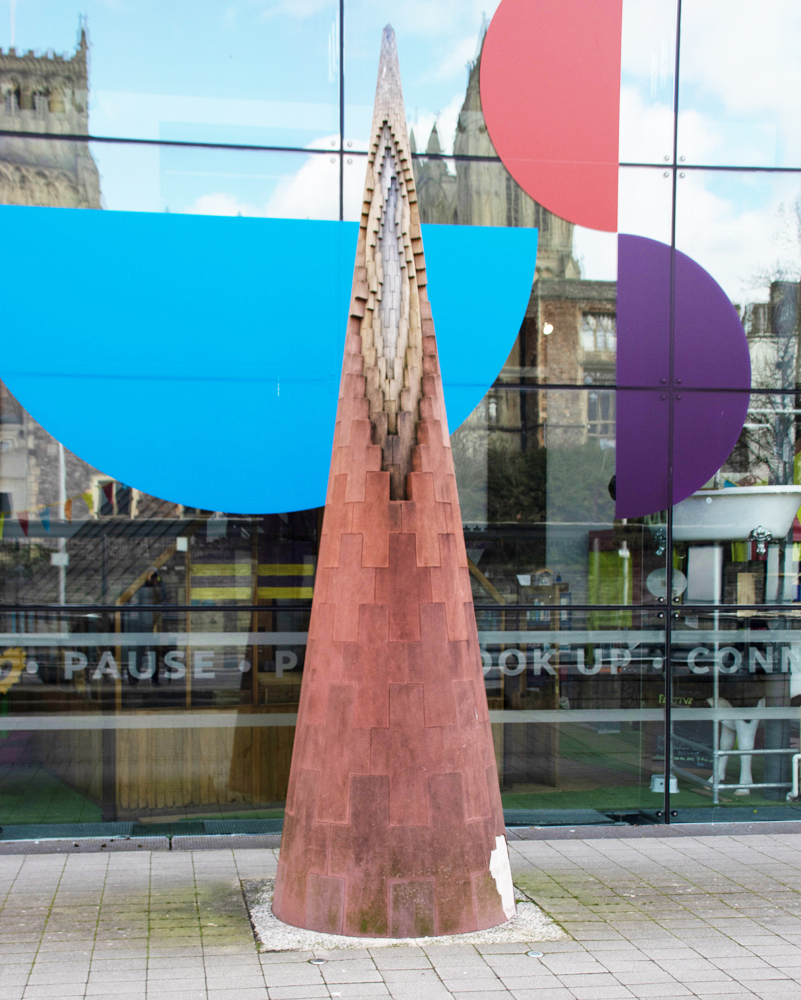
The Paul Dirac Memorial
Paul Dirac was a Nobel Prize winning mathematician, who once said, “God used beautiful mathematics in creating the world”. He was born in Bristol in 1902, and is regarded as second only to Einstein, in his day. His Nobel Prize was in Physics, for his work on quantum mechanics in 1933. The memorial sculpture is designed to represent colour, heat, and light, as these phenomena are only described adequately by quantum mechanics. Find out more on our tour.
We the Curious
Behind the Dirac Memorial is the “We the Curious” science and arts centre. It is also an educational charity where members of the public and school groups can take part in experiments and activities. It was originally opened in 2000 as At-Bristol, rebranding in 2017 to “We the Curious”. Their aim is to create a “culture of curiosity” and make science accessible to all. Find out more on our tour
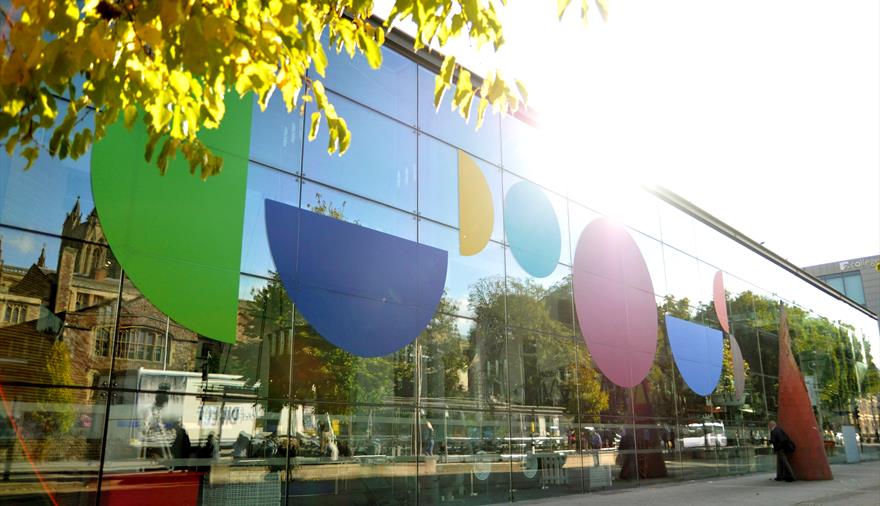
Book Your Bristol Walking Tour Today!


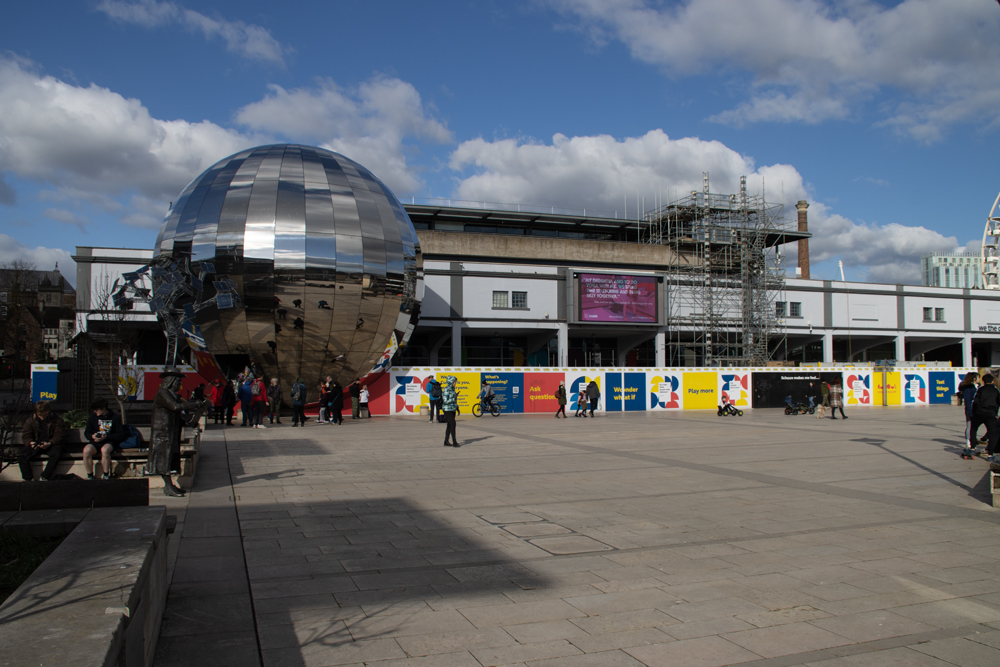
The Millenium Square
The Millenium Square has a statue to Bristol born actor, Cary Grant, and it was unveiled by his widow in 2001. The other statues here are to William Penn, who founded Pennsylvania, Thomas Chatterton, the English poet, who committed suicide at 17, but influenced Shelley, Keats, Wordsworth and Coleridge, and finally William Tyndale who was a protestant reformer and translated the bible into English. Find out more on our tour.
Bristol Aquarium
Bristol Aquarium is a wonderful and colourful visitor attraction. It has over 40 naturally themed displays and thousands of amazing aquatic creatures, including everything from innocuous sea horses, to deadly piranhas, and puffer fish. You will go an on undersea safari through the underwater tunnel, where marine life swims all around you. It is the only aquarium in the UK to feature a giant botanical house, filled with exotic plants from all around the world, including real bananas growing. So if you have the time we definitely recommend you visit this attraction.
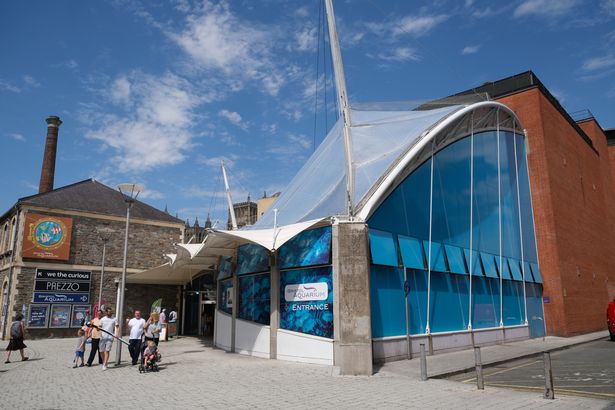
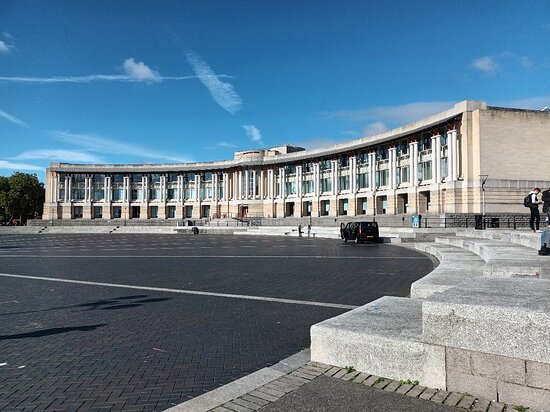
Lloyds Amphitheatre
This amazing curved building has been owned by Lloyds Bank since 1990. The area in front of it holds regular concerts and festivals, with a capacity for over 10,000 people. When there is no events on it is a great space next to the harbour, to take in all the harbour has to offer.
The historic prosperity of Bristol was based around the harbour, and the trade that went in and out of it, including being one point of the “golden triangle”, of the infamous slave trade. The English phrase, “ship shape and Bristol fashion”, came from the fact that ships entering the harbour had to be sure their cargoes were secure, as the River Avon was notorious for the extent of its high and low tides. In fact it has the second highest of any in the world. The “Floating Harbour” was constructed by removing the influence of the tides, which allowed ships here to always stay afloat, and operate loading and unloading, during these high and low tides. Find out more on our tour
Bristol Floating Harbour
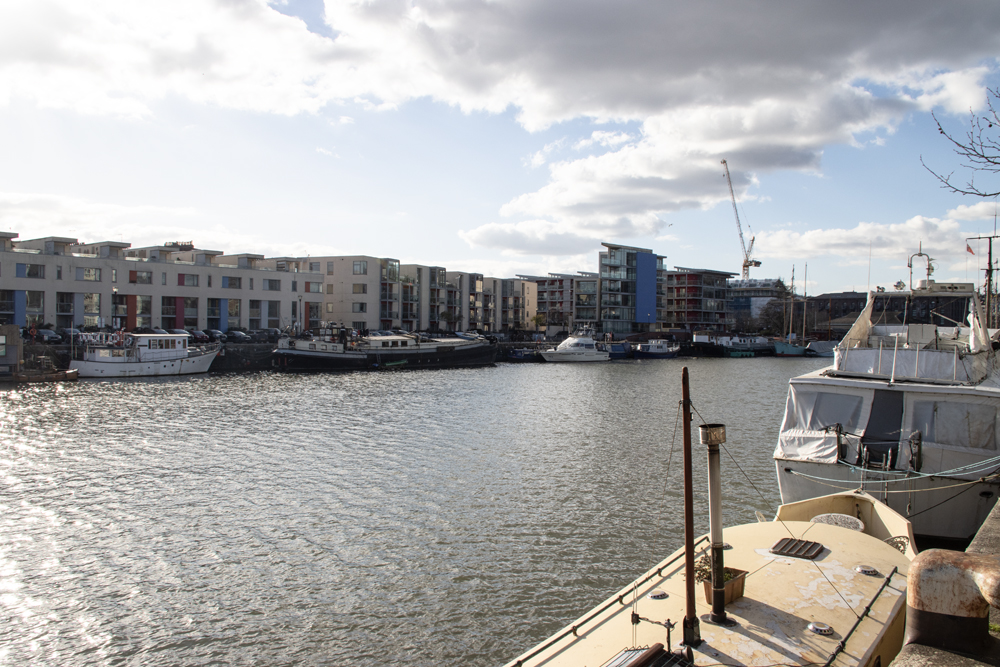
Book Your Favourite Walk Now!


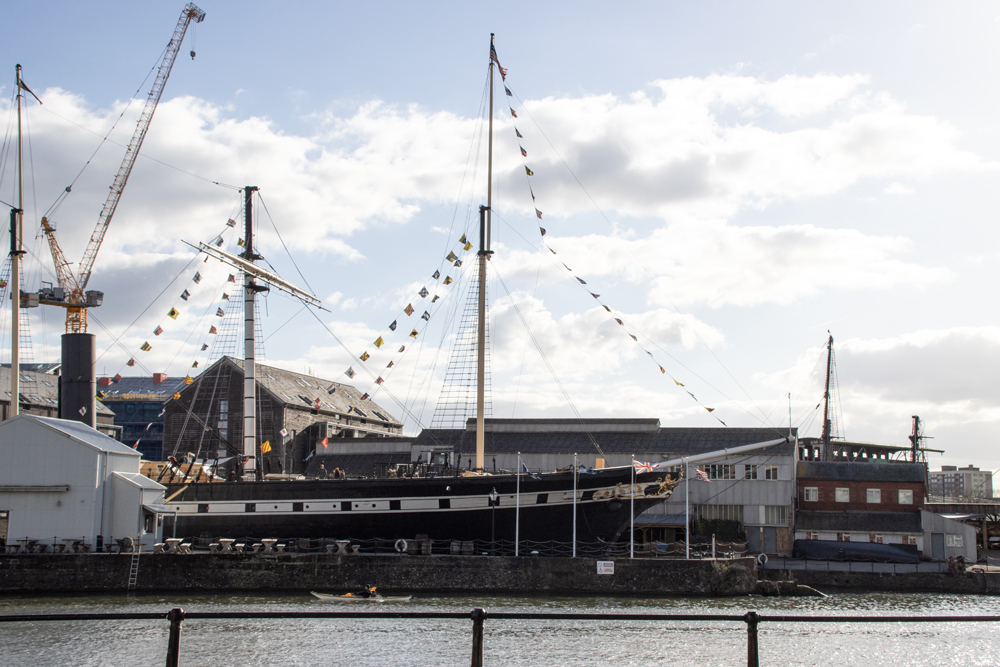
The SS Great Britain
The SS Great Britain is a museum, and was once a passenger steamship, that was very advanced at the time. She was the largest ship of her kind in the world from 1845 to 1854, at over 100 meters long. There are 4 decks in the ship, to house 120 crew plus, up to, 360 passengers in ocean going luxury. The ship was designed by Isambard Kingdom Brunel, and incorporated an iron construction, and screw style propellers. It was the first to combine both of these into one ocean going ship. Find out more on our tour.
Cabot Tower
The tower was built in the 1890’s, to commemorate the 400th anniversary of the journey of John Cabot, from Bristol to, what is now called, Canada. In the middle-ages there was a chapel here, and in the 16th Century it was replaced by a windmill. There are some fine views over Bristol and the surrounding countryside, from this raised vantage point. The tower is 32 meters high, and is made from Bristol cream stone, and red sandstone. Find out more on our tour.
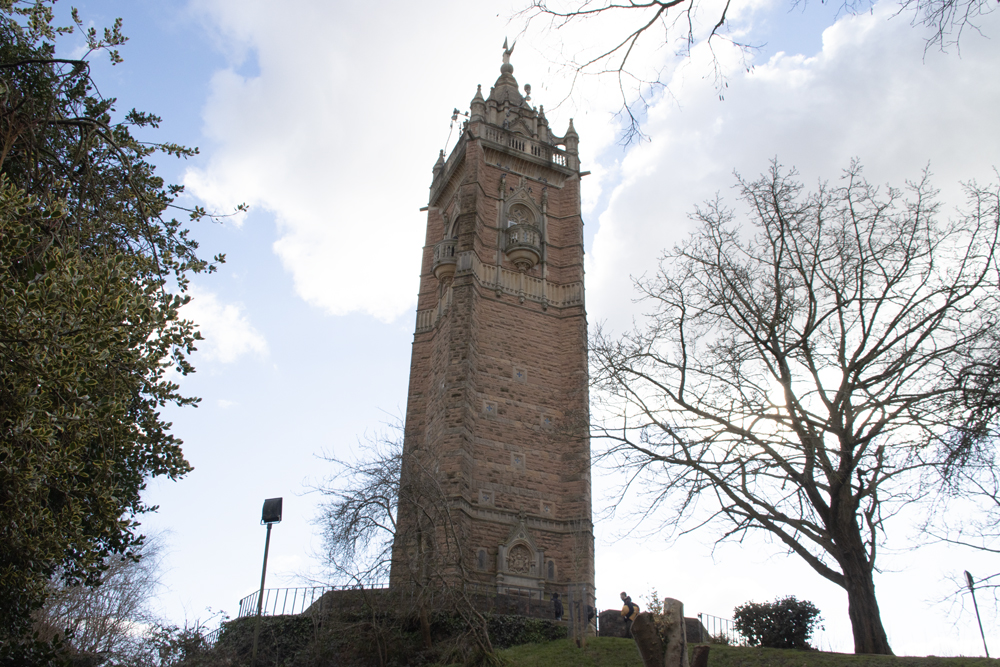
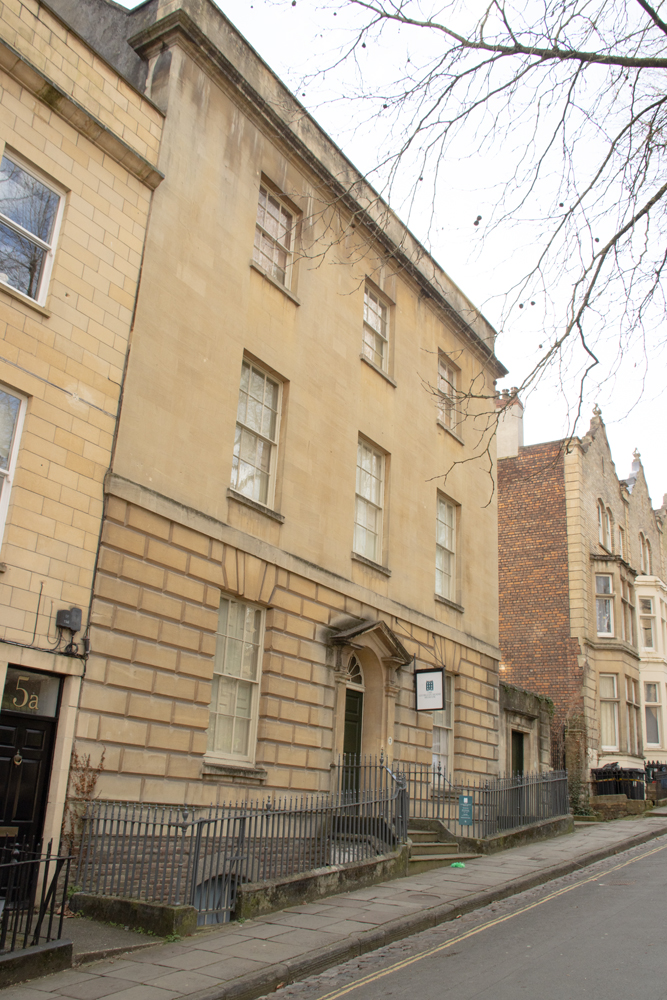
The Georgian House Museum
The museum is a preserved 18th century town house. You can see original furnishings to the house, that date the from when it was built. The building has functioned as a museum since 1937. It was originally built in 1790, for a sugar merchant and slave owner called John Pinney. You can see the dining room, drawing rooms, study, library, bedroom, and housekeeper’s room. The museum has film and video presentations, and a special display on slavery and sugar plantations. Find out more on our tour.
The Ken Stradling Collection
The Ken Stradling Collection is a treasure trove of artefacts, amassed from a lifetime of collecting. It tells the story of one mans’ obsession with beautiful and unusual objects, that all date from the last two centuries. The centre is open to the public, and also hosts regularly changing exhibitions. It also houses the Design Study Centre. Kens lifetime commitment to his collecting was rewarded with an MBE, in 2020. Find out more on our tour.
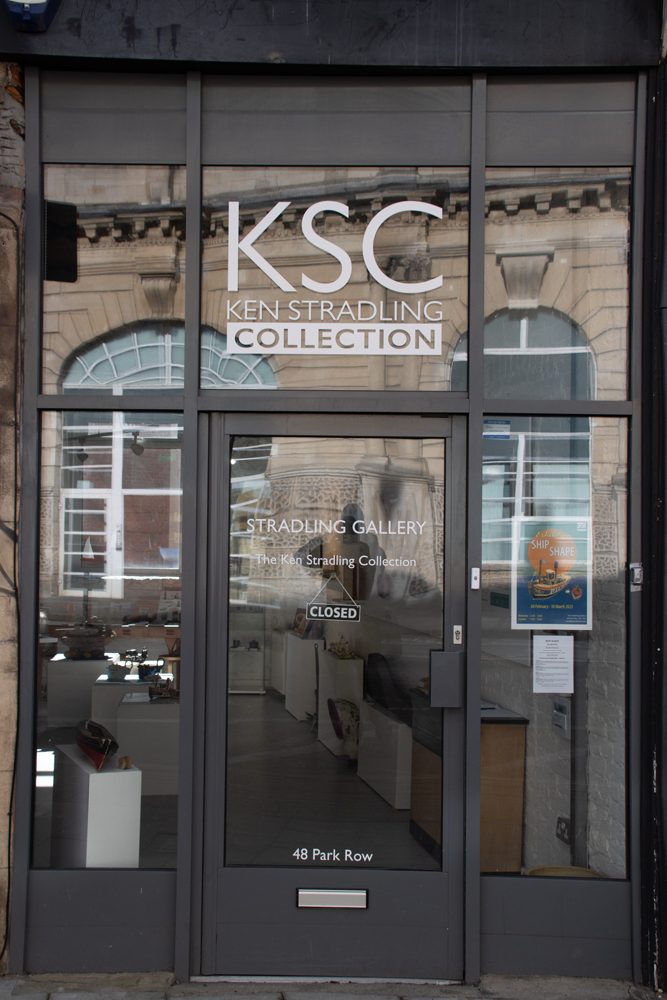
Book Your Favourite Walk Now!


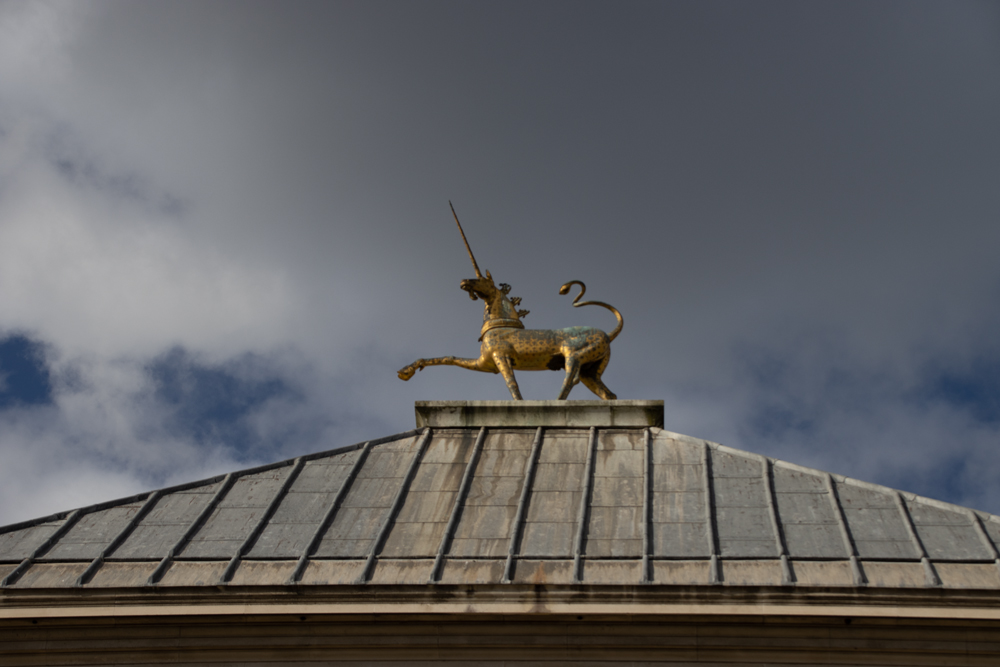
City Hall Unicorns
On either end of the City Hall building, you will notice a Unicorn on top. The association of Bristol with the Unicorn dates back to 1569, when they appeared on the city seal. Apparently, the “Unicorn” was chosen because, “Unicorns only do homage to men of virtue”. The modern coat of arms of the city is based on this ancient seal, and features a ship, and Bristol Castle, between two unicorns. Find out more on our walk.
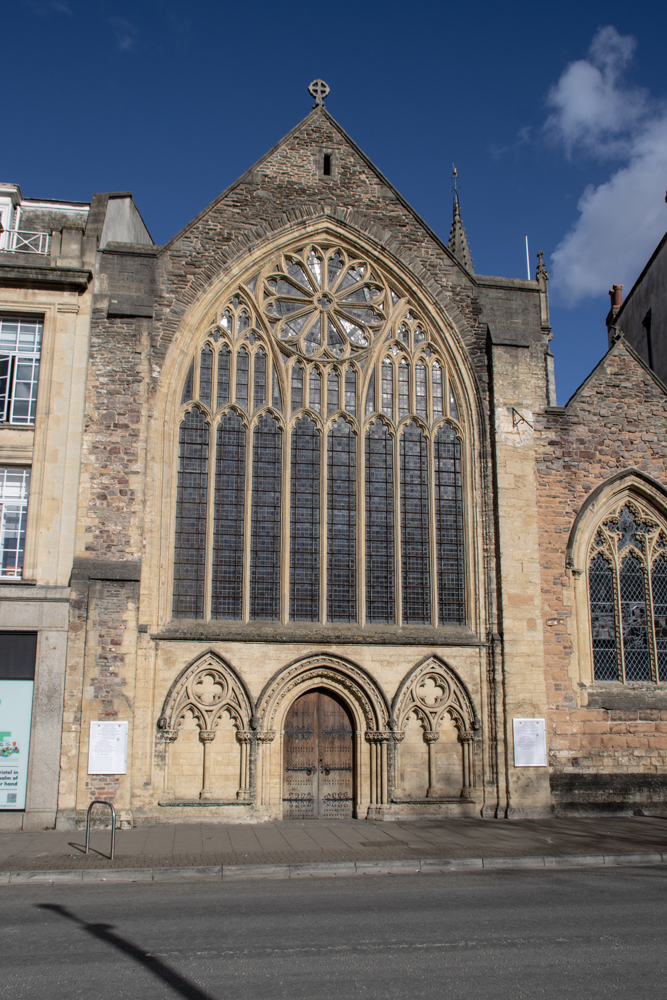
The Lord Mayors Chapel
Bristol City council is the only local authority in England, to be responsible for the running of a church. This chapel has neither a parish, nor a denomination, and is known as a “Civic Peculiar”. The chaplain offers pastoral care to the Lord Mayor, and the city elected councillors, on a one-year basis. The position is largely ceremonial. The Lord Mayors Chapel is the last remaining building of the 13th Century Hospital of St Mark, founded by the local Saint Augustine Abbey, which became Bristol Cathedral. Find out more on our walking tour.
Other Recommended Walks in the City
London Pub Walks Video Gallery
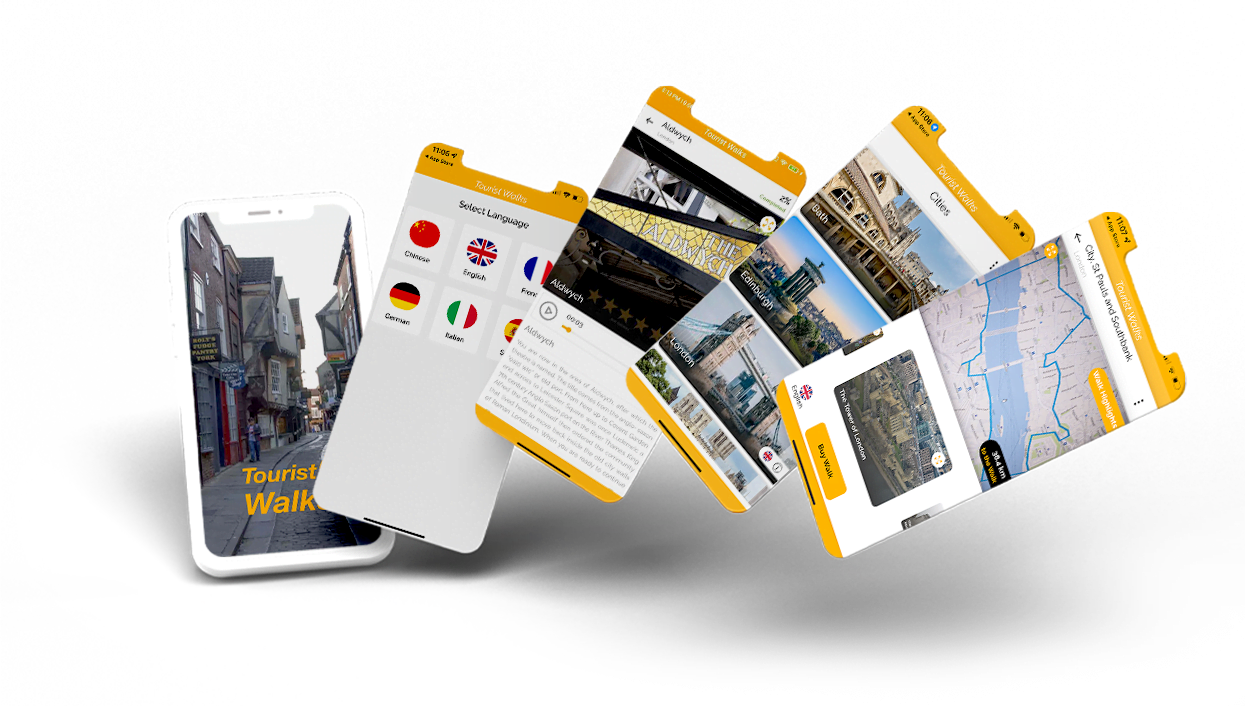
SELF GUIDED WALKS
Do you wish to explore all the beautiful tourist spots? Download our application and discover the hidden beauty and mystery of your destination. Explore today!


Frequently Asked Questions
No. After the walks have been downloaded, for which you need an internet connection, no mobile data is required to do the walks.
No you can pause and resume at any point within the walk. Whether you need a coffee or a comfort break the walks are entirely flexible.
Yes you will receive both verbal guidance and a GPS enabled map to take you around each of the points of interest on the walks.
No the walks are circular so you will receive multiple options of where to start each walk.
Yes there are providing you buy them as a bundle, not one at a time. You can even buy all the walks in one package at a very generous price.
For each point of interest you will get information both verbally and in text and sometimes video form together with helpful images to get the most from each one.
You can pay by all manner of credit and debit cards as well as Paypal.
In the walk summary we point out if the walk is suitable for wheelchairs and pets, and there is also an indication of the distance of the walk, and how long it will take.
Yes we would love to hear from you through our website: www.touristwalks.co.uk
Happy Tourists

I absolutely enjoyed using the Tourist Walk app! The guided walking tours are very informative and interesting. I was able to find the tour I wanted quickly and easily, and the app was very easy to navigate. The walking tour itself was a lot of fun, and I learned a lot about the city. Overall, I would highly recommend this.

Carla Mathew
Tourist Walk is an excellent walking guide app. It is extremely user-friendly and provides great information on the various tours available. I would highly recommend this app to anyone visiting a new city!

Shaun Miles
Tourist Walk is an amazing app that provides guided tours of various cities. The app is extremely user-friendly and easy to navigate. I was able to find the tour I was looking for quickly and easily. The tour itself was very informative and interesting. I would highly recommend this app to anyone visiting a new city!

